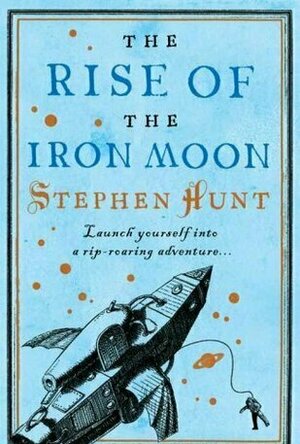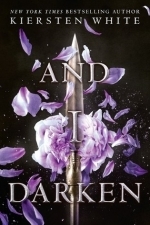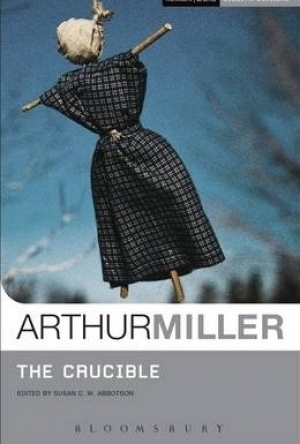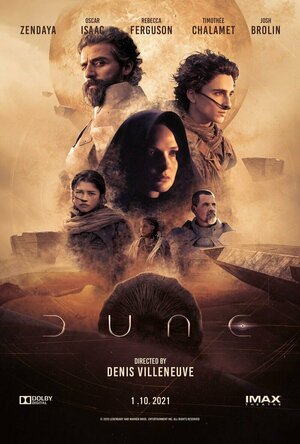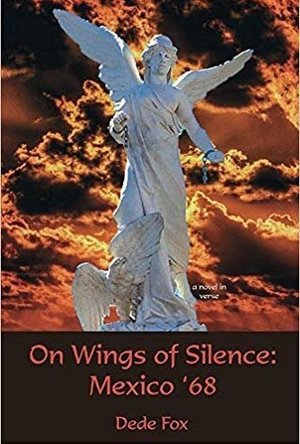Search
Phil Leader (619 KP) rated The Rise of the Iron Moon (Jackelian #3) in Books
Nov 25, 2019
This book looked interesting so I picked it up. I'd not heard of Stephen Hunt or this series but the premise intrigued me.
Although this is the third book of the series and there are plenty of references to events that must take place in the previous books, and despite the writing being immersive rather than explanatory, I found it easy to get into the story.
The world is very interesting. I have read other novels set in a faux Victorian Steampunk-like world but nothing like this. This is like an alternative history, extremely divergeant from ours but with enough similarities that the combination is quite striking.
For example there was a civil war in the past which parliament won, as in the 'real' British history. However all of the royals have been locked up ever since in the Royal Breeding House - kept as figureheads under constant house arrest and threat of execution at the whim of parliament to appease the masses.
There are also countries ruled by thinking, steam driven machines. Others beneath the waves or living strictly by some political principal.
However the world is under threat. All the countries are being slowly invaded from the North by a very aggressive foe. Under attack the land of Jackals itself calls on its heroes to save the day. Purity Blake, one of the inmates of the Royal Breeding House. Molly Templar, writer of penny dreadful science fiction stories and sometimes defender of the land. Coppertracks, a machine life steam man and scientist. Their companions must overcome impossible odds and put aside the enmity between nations to fight off the attackers. Against all the odds, can they succeed?
The book is a little slow to start up, as the characters are introduced in their diverse environments. But slowly the threads are drawn together and each play their part in the fight. And as they begin to weave into the plot the pace quickens. The story twists and turns, always astonishing in its concept and direction.
The outstanding part of this book is the imagination that has gone into it. Nearly everything is completely different from our world and yet it ties together convincingly into a land both of industry and grime, poverty and privilege but also of very real myth and legend.
The ending is a little bit Deus Ex Machina but really this fits in with the tone quite well and at least keeps the pace up in the final pages. There are enough wonderful and fantastic ideas let loose to wander around in this book for several novels.
Definitely a recommended book. I now need to search out the first book - The Court Of The Air - so I can find out what has happened to the characters before.
Although this is the third book of the series and there are plenty of references to events that must take place in the previous books, and despite the writing being immersive rather than explanatory, I found it easy to get into the story.
The world is very interesting. I have read other novels set in a faux Victorian Steampunk-like world but nothing like this. This is like an alternative history, extremely divergeant from ours but with enough similarities that the combination is quite striking.
For example there was a civil war in the past which parliament won, as in the 'real' British history. However all of the royals have been locked up ever since in the Royal Breeding House - kept as figureheads under constant house arrest and threat of execution at the whim of parliament to appease the masses.
There are also countries ruled by thinking, steam driven machines. Others beneath the waves or living strictly by some political principal.
However the world is under threat. All the countries are being slowly invaded from the North by a very aggressive foe. Under attack the land of Jackals itself calls on its heroes to save the day. Purity Blake, one of the inmates of the Royal Breeding House. Molly Templar, writer of penny dreadful science fiction stories and sometimes defender of the land. Coppertracks, a machine life steam man and scientist. Their companions must overcome impossible odds and put aside the enmity between nations to fight off the attackers. Against all the odds, can they succeed?
The book is a little slow to start up, as the characters are introduced in their diverse environments. But slowly the threads are drawn together and each play their part in the fight. And as they begin to weave into the plot the pace quickens. The story twists and turns, always astonishing in its concept and direction.
The outstanding part of this book is the imagination that has gone into it. Nearly everything is completely different from our world and yet it ties together convincingly into a land both of industry and grime, poverty and privilege but also of very real myth and legend.
The ending is a little bit Deus Ex Machina but really this fits in with the tone quite well and at least keeps the pace up in the final pages. There are enough wonderful and fantastic ideas let loose to wander around in this book for several novels.
Definitely a recommended book. I now need to search out the first book - The Court Of The Air - so I can find out what has happened to the characters before.

From the Fatherland with Love
Ryu Murakami, Charles De Wolf, Ralph McCarthy and Ginny Takemori
Book
An ambitious, epic dystopian novel - part political thriller and part satire. From the Fatherland,...
Louise (64 KP) rated And I Darken (The Conqueror's Saga #1) in Books
Jul 2, 2018
First I would like to say a massive thank you to Goodreads as I won myself a copy on one of their giveaways( Aren’t they great!)
And I Darken is a new Historical fiction/Re-telling of Vlad the Impaler but gender swapped. Goodreads have it listed as being a fantasy, but there is no magic or any paranormal goings on whatsoever…glad we got that cleared up.
Our story follows Ladislav (Lada) and Radu Dragwyla the descendants of Vlad Dracul, Prince of Wallachia. Vlad is a vile human being and uses his own children for bargaining with the Ottoman Empire, there lives are at risk if he does not keep to the treaties terms. Living in the Ottoman Empire is risky for Lada and Radu, Lada could easily be married off to some suitor for allegiance or killed whichever is easier for the Sultan. Running the grounds they bump into a young boy the same age as them, only to find that he is the Sultan’s son Mehmed. Mehmed is a lonely boy with only his tutors for company so he befriends them both and shares all his education and time with them, which in turn takes them out of the spotlight.
Lada is a very strong character, she is a force to be reckoned with. She is brutal,fierce and just a total badass throughout the book. Being born a woman is one almighty struggle to be taken seriously in the 1400’s. She knows that she is the rightful heir of Wallachia at the young age of 11. She wants to impress her father with her fighting skills and there is a point when she thinks she has, but the only thoughts her father has is marrying her off to a suitor and being a dutiful wife. Lada is very family orientated and has a very unique relationship with her brother Radu but she will never show any emotion as this is a sign of weakness and she is perceived as a cold-hearted bitch.
Radu was always a disappointment to his father, weak,cowardly and clinging to his nursemaids side infuriated Vlad. Radu was the more emotional of siblings, even though he was not great at fighting he had a devious and cunning mind that made him equally as dangerous as Lada.
My feelings towards the characters changed a lot throughout the book at first I thought Lada was just a psychotic child but realised she is trying to prove herself as being fierce. Radu he was very sweet throughout the book and always wanted his sister to just open up and tell him she loved him and for him to tell her his secrets and feelings. The main point is that they are flawed and this is what makes characters great.
Mehmed just annoyed me and he got in the way of Lada’s plans.
The book does contain romance, a love triangle where no one expresses their love for anyone as they are too scared of the consequences or that it will stop them from their goals in life. So the romance is frustrating to say the least.
This book has a lot of political intrigue,so be prepared for wars,treaties,soldiers and their ranks. This is Historical fiction but as in the author’s notes at the end it is not accurate and a lot is made up. Religion is also touched upon, mostly Islam with Christianity but it’s not too in your face or info dumping. The book is nearly 500 pages long! I felt it could have been shorter. I enjoyed the relationship between Radu and Lada,it was a very different set-up from what we are used to. This did take me a little longer to read as in places it was very slow and I found myself getting bored.
This book covers themes such as sibling rivalry, relationships, families, romance, feminism, sexism and politics
<img src="https://images.gr-assets.com/books/1476160834l/22817331.jpg"; width="120" height="180"/>
Now I Rise is the second installment of the And I Darken saga which is due to be released in June 2017 which I will be reading as I am interested in what is going to happen next with Lada.
Overall I rated this 3.5 out of 5 stars
And I Darken is a new Historical fiction/Re-telling of Vlad the Impaler but gender swapped. Goodreads have it listed as being a fantasy, but there is no magic or any paranormal goings on whatsoever…glad we got that cleared up.
Our story follows Ladislav (Lada) and Radu Dragwyla the descendants of Vlad Dracul, Prince of Wallachia. Vlad is a vile human being and uses his own children for bargaining with the Ottoman Empire, there lives are at risk if he does not keep to the treaties terms. Living in the Ottoman Empire is risky for Lada and Radu, Lada could easily be married off to some suitor for allegiance or killed whichever is easier for the Sultan. Running the grounds they bump into a young boy the same age as them, only to find that he is the Sultan’s son Mehmed. Mehmed is a lonely boy with only his tutors for company so he befriends them both and shares all his education and time with them, which in turn takes them out of the spotlight.
Lada is a very strong character, she is a force to be reckoned with. She is brutal,fierce and just a total badass throughout the book. Being born a woman is one almighty struggle to be taken seriously in the 1400’s. She knows that she is the rightful heir of Wallachia at the young age of 11. She wants to impress her father with her fighting skills and there is a point when she thinks she has, but the only thoughts her father has is marrying her off to a suitor and being a dutiful wife. Lada is very family orientated and has a very unique relationship with her brother Radu but she will never show any emotion as this is a sign of weakness and she is perceived as a cold-hearted bitch.
Radu was always a disappointment to his father, weak,cowardly and clinging to his nursemaids side infuriated Vlad. Radu was the more emotional of siblings, even though he was not great at fighting he had a devious and cunning mind that made him equally as dangerous as Lada.
My feelings towards the characters changed a lot throughout the book at first I thought Lada was just a psychotic child but realised she is trying to prove herself as being fierce. Radu he was very sweet throughout the book and always wanted his sister to just open up and tell him she loved him and for him to tell her his secrets and feelings. The main point is that they are flawed and this is what makes characters great.
Mehmed just annoyed me and he got in the way of Lada’s plans.
The book does contain romance, a love triangle where no one expresses their love for anyone as they are too scared of the consequences or that it will stop them from their goals in life. So the romance is frustrating to say the least.
This book has a lot of political intrigue,so be prepared for wars,treaties,soldiers and their ranks. This is Historical fiction but as in the author’s notes at the end it is not accurate and a lot is made up. Religion is also touched upon, mostly Islam with Christianity but it’s not too in your face or info dumping. The book is nearly 500 pages long! I felt it could have been shorter. I enjoyed the relationship between Radu and Lada,it was a very different set-up from what we are used to. This did take me a little longer to read as in places it was very slow and I found myself getting bored.
This book covers themes such as sibling rivalry, relationships, families, romance, feminism, sexism and politics
<img src="https://images.gr-assets.com/books/1476160834l/22817331.jpg"; width="120" height="180"/>
Now I Rise is the second installment of the And I Darken saga which is due to be released in June 2017 which I will be reading as I am interested in what is going to happen next with Lada.
Overall I rated this 3.5 out of 5 stars
Cynthia Armistead (17 KP) rated Blood Oath (Nathaniel Cade #1) in Books
Mar 1, 2018
Blood Oath is an interesting and fairly refreshing variation on the vampire riff. Most of the current tales give us a suave, sexy predator who mesmerizes his or her prey, leaving humans pining for their presence. They might even fall in love with a human. Nathaniel Cade, however, refers to humans as food, saying, "Would you have sex with a cow?" That makes much more sense to me. It's a good thing he isn't interested, either, as the typical reaction people have to encountering him is utter panic, often involving the loss of bladder control.
Cade is definitely a predator, though - an extremely effective one. Farnsworth attempts to explain his abilities scientifically, rather than mystically (I'd classify this book as science fiction if I had to choose a genre, whereas most books featuring vampires and similar creatures are fantasy or horror). The same is true of the enenies he faces.
While I'm not generally interested in socio-political thrillers (which is what this book was, other than a story about a vampire who works for the president), I did enjoy the fresh take on an old trope. While I normally groan when I see the first book from a new author billed as the beginning of a series (do publishers even buy single books any more?), I'm somewhat pleased this time. I do wish they'd been a little more careful with the name of the series (The President's Vampire), as there's another book with the same name: [b:The President's Vampire: Strange-but-True Tales of the United States of America|690096|The President's Vampire Strange-but-True Tales of the United States of America|Robert Damon Schneck|http://photo.goodreads.com/books/1177264074s/690096.jpg|676444] by [a:Robert Damon Schneck|368998|Robert Damon Schneck|http://www.goodreads.com/images/nophoto/nophoto-U-50x66.jpg]. Then again, if Farnsworth's book or series takes off, I suppose there's a chance that sales of Schneck's will as well. I'm sure he wouldn't complain about that at all. I've put it on my to-read list, after all.
I hope to talk my partner, Sam, into reading <i>Blood Oath</i>. If I do, it'll be fairly miraculous, as I don't recall him anything with dragons or werewolves in it other than ([a:Jim Butcher|10746|Jim Butcher|http://photo.goodreads.com/authors/1205261964p2/10746.jpg]'s Dresden Files) for most of the time that I've known him (12 years as of this writing). After his years at White Wolf, I think many books seem more than slightly derivative. He also did so much research before working on books he wrote for them (like [b:The Book of Nod|416122|The Book of Nod|Sam Chupp|http://photo.goodreads.com/books/1223664741s/416122.jpg|405290]) that he got a little burned out on certain subjects. Farnsworth's approach really is different enough that I think he might give it a chance. Will you?
Cade is definitely a predator, though - an extremely effective one. Farnsworth attempts to explain his abilities scientifically, rather than mystically (I'd classify this book as science fiction if I had to choose a genre, whereas most books featuring vampires and similar creatures are fantasy or horror). The same is true of the enenies he faces.
While I'm not generally interested in socio-political thrillers (which is what this book was, other than a story about a vampire who works for the president), I did enjoy the fresh take on an old trope. While I normally groan when I see the first book from a new author billed as the beginning of a series (do publishers even buy single books any more?), I'm somewhat pleased this time. I do wish they'd been a little more careful with the name of the series (The President's Vampire), as there's another book with the same name: [b:The President's Vampire: Strange-but-True Tales of the United States of America|690096|The President's Vampire Strange-but-True Tales of the United States of America|Robert Damon Schneck|http://photo.goodreads.com/books/1177264074s/690096.jpg|676444] by [a:Robert Damon Schneck|368998|Robert Damon Schneck|http://www.goodreads.com/images/nophoto/nophoto-U-50x66.jpg]. Then again, if Farnsworth's book or series takes off, I suppose there's a chance that sales of Schneck's will as well. I'm sure he wouldn't complain about that at all. I've put it on my to-read list, after all.
I hope to talk my partner, Sam, into reading <i>Blood Oath</i>. If I do, it'll be fairly miraculous, as I don't recall him anything with dragons or werewolves in it other than ([a:Jim Butcher|10746|Jim Butcher|http://photo.goodreads.com/authors/1205261964p2/10746.jpg]'s Dresden Files) for most of the time that I've known him (12 years as of this writing). After his years at White Wolf, I think many books seem more than slightly derivative. He also did so much research before working on books he wrote for them (like [b:The Book of Nod|416122|The Book of Nod|Sam Chupp|http://photo.goodreads.com/books/1223664741s/416122.jpg|405290]) that he got a little burned out on certain subjects. Farnsworth's approach really is different enough that I think he might give it a chance. Will you?
JT (287 KP) rated Argo (2012) in Movies
Mar 10, 2020
Does making a film based on a true story make it any more endearing to the Oscar big wigs? Possibly, but one thing is for sure, Ben Affleck’s third film Argo is an outstanding piece of film making with exceptional attention to detail and sense of realism.
In 1979 Iran was overrun by Iranian revolutionaries, these revolutionaries stormed the American embassy taking several Americans hostage. Six of those managed to escape to the official residence of the Canadian Ambassador where the CIA was eventually ordered to get them out of the country by whatever means necessary.
Led by Tony Mendez (Affleck) a CIA expert in exfiltration he puts together an elaborate plan to go in as a film producer and rescue the six who’ll pose as a film crew on a location hunt for new sci-fi flick, Argo. Even if this was fiction it would be a pretty daring plan in an environment that was so hostile for its time they’re hanging people by cranes in the street, and women carry machine guns!
In order to make the film seem as real as possible Mendez enlists the help of John Chambers (John Goodman) a Hollywood make-up artist whose helped the CIA out before and film producer Lester Siegel (Alan Arkin). Between them they put the film into fake production, concoct false identities for the six and set about taking them out directly though the Iranian airport in a daring escape.
Affleck gets the cinematography spot on, creating a grainy perspective for that era and using some real footage as well. It all helps convey the narrative and plot that this was one of the most dangerous missions of its time and one what would live long in CIA and American history.
Goodman and Arkin add a humorous element to the proceedings “if it’s going to be a fake film I want it to be a fake hit” Lester claims when he’s approached about the project. The other side feels like a 70s version of 24 with the political suits in boardrooms arguing about the best way to execute the plan.
The tension is built slowly with everything climaxing to a pulsating last act which will have your heart pounding and seat gripped. Personally I didn’t endear to any of the six escapees, their stories are not built up enough other than they’re all unsure if they can trust Mendez to get them back on home soil safely.
Argo got the best picture Oscar over a lot of other seemingly worthy nominees, but you couldn’t deny Affleck his moment in the spotlight and cementing him as one of the best actor to director transitions. While the film might not be entirely accurate, Affleck just wants to get to the heart of this espionage thriller and does so while finding a perfect balance between comedy and drama.
In 1979 Iran was overrun by Iranian revolutionaries, these revolutionaries stormed the American embassy taking several Americans hostage. Six of those managed to escape to the official residence of the Canadian Ambassador where the CIA was eventually ordered to get them out of the country by whatever means necessary.
Led by Tony Mendez (Affleck) a CIA expert in exfiltration he puts together an elaborate plan to go in as a film producer and rescue the six who’ll pose as a film crew on a location hunt for new sci-fi flick, Argo. Even if this was fiction it would be a pretty daring plan in an environment that was so hostile for its time they’re hanging people by cranes in the street, and women carry machine guns!
In order to make the film seem as real as possible Mendez enlists the help of John Chambers (John Goodman) a Hollywood make-up artist whose helped the CIA out before and film producer Lester Siegel (Alan Arkin). Between them they put the film into fake production, concoct false identities for the six and set about taking them out directly though the Iranian airport in a daring escape.
Affleck gets the cinematography spot on, creating a grainy perspective for that era and using some real footage as well. It all helps convey the narrative and plot that this was one of the most dangerous missions of its time and one what would live long in CIA and American history.
Goodman and Arkin add a humorous element to the proceedings “if it’s going to be a fake film I want it to be a fake hit” Lester claims when he’s approached about the project. The other side feels like a 70s version of 24 with the political suits in boardrooms arguing about the best way to execute the plan.
The tension is built slowly with everything climaxing to a pulsating last act which will have your heart pounding and seat gripped. Personally I didn’t endear to any of the six escapees, their stories are not built up enough other than they’re all unsure if they can trust Mendez to get them back on home soil safely.
Argo got the best picture Oscar over a lot of other seemingly worthy nominees, but you couldn’t deny Affleck his moment in the spotlight and cementing him as one of the best actor to director transitions. While the film might not be entirely accurate, Affleck just wants to get to the heart of this espionage thriller and does so while finding a perfect balance between comedy and drama.
Becs (244 KP) rated The Crucible in Books
Oct 2, 2019
I absolutely love Arthur Miller and anything regarding witches/ the Salem Trials. So, the crucible for me is a five-star novel. Can we just take a moment to admire the writers of the 50’s and older as they don’t seem to be getting much hype lately? Like, literary classics are deemed school reads and not your typical everyday read. THIS NEEDS TO CHANGE.
Reading these in school and then giving them a reread five years after graduating, has shown a new light onto these novels. And has made me appreciate them more as a whole compared to when I read them in high school. If you haven’t read many literary classics, I recommend starting with something by Arthur Miller or George Orwell. Yes, they may be a bit hard to get into at first, but give it time. That’s the key when reading any book!
The Crucible by Arthur Miller
Genre: Literary Classic, Historical Fiction, Plays, Drama
Synopsis: “I believe that the reader will discover here the essential nature of one of the strangest and most awful chapters in human history,” Arthur Miller wrote of his classic play about the witch-hunts and trials in seventeenth-century Salem, Massachusetts. Based on historical people and real events, Miller’s drama is a searing portrait of a community engulfed by hysteria. In the rigid theocracy of Salem, rumors that women are practicing witchcraft galvanize the town’s most basic fears and suspicions; and when a young girl accuses Elizabeth Proctor of being a witch, self-righteous church leaders and townspeople insist that Elizabeth be brought to trial. The ruthlessness of the prosecutors and the eagerness of neighbor to testify against neighbor brilliantly illuminate the destructive power of socially sanctioned violence.
Written in 1953, The Crucible is a mirror Miller uses to reflect the anti-communist hysteria inspired by Senator Joseph McCarthy’s “witch-hunts” in the United States. Within the text itself, Miller contemplates the parallels, writing, “Political opposition… is given an inhumane overlay, which then justifies the abrogation of all normally applied customs of civilized behavior. A political policy is equated with moral right, and opposition to it with diabolical malevolence.”
WIth an introduction by Christopher Bigsby.
Audience/ Reading Level: High School +
Interests: Plays, Drama, Witches, the Salem Trials, Arthur Miller, Literary Classics.
Point of View: Third Person Omniscient
Difficulty Reading: With every literary classic, you run into the problem of the first 30% of the novel being a bore or hard to get into. The Crucible was only a bore in parts but taking the novel as a whole, it was a pretty easy read.
Promise: “I believe that the reader will discover here the essential nature of one of the strangest and most awful chapters in human history.”
Insights: The Crucible is based on true events and Arthur Miller has a way of explaining everything that was wrong with the way people lived. I.E. Woman did not have rights until the early 1920’s. This didn’t stop some countries/states to still not allow the woman to have rights. But taking The Crucible into perspective, the women that were charged with witchcraft were unable to explain themselves to the men. The men believed the accusers either because they were sleeping with them or because they were their family. Luckily, nowadays we don’t have this extreme of situations but it still does exist. The Crucible teaches all of its readers, young or old, many valuable lessons that are sometimes hard to witness. Plus, Miller correlates the events in the Crucible to the anti-communist McCarthyism of the 1950s.
Favorite Quotes: “I speak my own sins; I cannot judge another. I have no tongue for it.”
“Because it is my name! Because I cannot have another in my life! Because I lie and sign myself to lies! Because I am not worth the dust on the feet of them that hang! How may I live without my name? I have given you my soul; leave me my name!”
“You are pulling down heaven and raising up a whore”
What will you gain: A love for another literary classic and a love for Arthur Miller if you do not already love his writing. Plus, a great historical read.
Aesthetics: The witches, the trials, the way people take sides, I mean I can’t say much more without giving spoilers away. We wouldn’t want that, now would we?
“It is rare for people to be asked the question which puts them squarely in front of themselves”
Reading these in school and then giving them a reread five years after graduating, has shown a new light onto these novels. And has made me appreciate them more as a whole compared to when I read them in high school. If you haven’t read many literary classics, I recommend starting with something by Arthur Miller or George Orwell. Yes, they may be a bit hard to get into at first, but give it time. That’s the key when reading any book!
The Crucible by Arthur Miller
Genre: Literary Classic, Historical Fiction, Plays, Drama
Synopsis: “I believe that the reader will discover here the essential nature of one of the strangest and most awful chapters in human history,” Arthur Miller wrote of his classic play about the witch-hunts and trials in seventeenth-century Salem, Massachusetts. Based on historical people and real events, Miller’s drama is a searing portrait of a community engulfed by hysteria. In the rigid theocracy of Salem, rumors that women are practicing witchcraft galvanize the town’s most basic fears and suspicions; and when a young girl accuses Elizabeth Proctor of being a witch, self-righteous church leaders and townspeople insist that Elizabeth be brought to trial. The ruthlessness of the prosecutors and the eagerness of neighbor to testify against neighbor brilliantly illuminate the destructive power of socially sanctioned violence.
Written in 1953, The Crucible is a mirror Miller uses to reflect the anti-communist hysteria inspired by Senator Joseph McCarthy’s “witch-hunts” in the United States. Within the text itself, Miller contemplates the parallels, writing, “Political opposition… is given an inhumane overlay, which then justifies the abrogation of all normally applied customs of civilized behavior. A political policy is equated with moral right, and opposition to it with diabolical malevolence.”
WIth an introduction by Christopher Bigsby.
Audience/ Reading Level: High School +
Interests: Plays, Drama, Witches, the Salem Trials, Arthur Miller, Literary Classics.
Point of View: Third Person Omniscient
Difficulty Reading: With every literary classic, you run into the problem of the first 30% of the novel being a bore or hard to get into. The Crucible was only a bore in parts but taking the novel as a whole, it was a pretty easy read.
Promise: “I believe that the reader will discover here the essential nature of one of the strangest and most awful chapters in human history.”
Insights: The Crucible is based on true events and Arthur Miller has a way of explaining everything that was wrong with the way people lived. I.E. Woman did not have rights until the early 1920’s. This didn’t stop some countries/states to still not allow the woman to have rights. But taking The Crucible into perspective, the women that were charged with witchcraft were unable to explain themselves to the men. The men believed the accusers either because they were sleeping with them or because they were their family. Luckily, nowadays we don’t have this extreme of situations but it still does exist. The Crucible teaches all of its readers, young or old, many valuable lessons that are sometimes hard to witness. Plus, Miller correlates the events in the Crucible to the anti-communist McCarthyism of the 1950s.
Favorite Quotes: “I speak my own sins; I cannot judge another. I have no tongue for it.”
“Because it is my name! Because I cannot have another in my life! Because I lie and sign myself to lies! Because I am not worth the dust on the feet of them that hang! How may I live without my name? I have given you my soul; leave me my name!”
“You are pulling down heaven and raising up a whore”
What will you gain: A love for another literary classic and a love for Arthur Miller if you do not already love his writing. Plus, a great historical read.
Aesthetics: The witches, the trials, the way people take sides, I mean I can’t say much more without giving spoilers away. We wouldn’t want that, now would we?
“It is rare for people to be asked the question which puts them squarely in front of themselves”
Bob Mann (459 KP) rated Dune (2021) in Movies
Oct 28, 2021
“He’s Not The Messiah – He’s a Very Naughty Boy!”
Certain works of fiction have been labelled with the tag of “unfilmable”, and Frank Herbert’s 1965 novel “Dune” is one of those. It’s full of exposition done as internal monologues – which screams “movie voiceover”. And regular readers will know my hatred of those!
Amazingly, Denis Villeneuve manages to pull off the impossible with his version of Dune (part 1), which I saw last night as part of a Cineworld Unlimited preview event. It’s close to being a movie masterpiece.
Plot Summary:
The desert planet of Arrakis is home to the Freman tribe but is a political battleground since it is the only known source of ‘Spice’: a substance that enables interplanetary travel.
Paul (Timothée Chalamet) is the heir to the throne of the House of Atreides, headed by his father Duke Leto Atreides (Oscar Isaac). His mother (Rebecca Ferguson) is Leto’s concubine and possessed with hereditary gifts: mystical powers that make her part of a sect of galactic ‘witches’ with mystical powers. But the House of Atreides is gaining in power, and the Emperor throws a political spanner into the works by evicting the vicious House of Harkonnen from Arrakis and giving it to Atreides. This puts both Houses on the path of war.
Certification:
US: PG-13. UK: 12A.
Talent:
Starring: Timothée Chalamet, Rebecca Ferguson, Oscar Isaac, Zendaya, Jason Momoa, Stellan Skarsgård, Josh Brolin, Javier Bardem, Dave Bautista, Charlotte Rampling.
Directed by: Denis Villeneuve.
Written by: Jon Spaihts, Denis Villeneuve and Eric Roth. (Based on the novel by Frank Herbert).
“Dune” Review: Positives:
My 5*’s for this one goes for the overall vision, which is grandiose with scenes that stick in the brain. As he demonstrated in “Arrival“, Villeneuve likes to go for huge spacecraft that hang “in the sky in much the same way that bricks don’t”*. And the ships in this vision are just HUGE.
The ensemble cast does a great job, with Chalamet, Isaac and Ferguson being particularly impressive. Stellan Skarsgård (looking like he is about to tell “a very amusing story about a goat”, if you get that movie reference!) looks to have the most gruelling acting job, having to emerge from, and descend into, a bath of black goo!
Much like Villeneuve’s “Blade Runner 2049“, this movie has cinematography that is worthy of framing and sticking on your wall. (Greig Fraser is the man behind the camera here).
Hans Zimmer‘s music is phenomenal. I’m not sure it’s a good ‘sit down and listen to’ sort of soundtrack, but it fits the movie beautifully.
* I used this Douglas Adams quote for my “Arrival” review, and then Mark Kermode used the same quote: I like to think he read my review!
Negatives:
It wasn’t a problem for me, but I expect some will consider the movie to be too much mood and not enough action. I’ve seen some comment that the film was “emotionally empty”: but I really didn’t feel that, and am well-invested in the story ready for “Part 2”.
This is probably faithful to the books, but given all of the advanced spacecraft technology on show, and laser/blaster technology, it seems bonkers that when we get to hand-to-hand combat between the armies that we get into “swords and sandals” territory.
Observation:
There’s nothing new under the Tatooine suns. And so much of this film has you linking the concepts back to “Star Wars”:
“The Force” is now “The Way”
The Jedi are the ‘Ben and Jerry Set’. (Well, that’s what it sounded like to me… and I don’t even like Ice Cream!)
Both films centre on a Messiah-like “chosen one”, foretold by legend
“Spice” also features in “Star Wars” with “spice runners” (as in the Millenium Falcon doing the ‘Kessel Run’)
There’s even a ‘pit of sarlaac’ moment in “Dune”.
Of course, since Frank Herbert wrote “Dune” in 1965, there’s a significant question as to who is plagiarising who here!
Summary Thoughts on “Dune”
At 2 hours 35 minutes, it’s YET ANOTHER long movie: cementing October 2021 as the month of long movies. (I just did a quick tally, and of the six films I’ve seen this month they average 139 minutes in length: and that’s with “Venom: Let There Be Carnage” dragging the average down!)
But this is a movie that MUST be seen on the big screen. It’s a memorable movie experience and highly recommended.
I can’t wait for Villeneuve’s “Part 2”, currently in pre-production.
Amazingly, Denis Villeneuve manages to pull off the impossible with his version of Dune (part 1), which I saw last night as part of a Cineworld Unlimited preview event. It’s close to being a movie masterpiece.
Plot Summary:
The desert planet of Arrakis is home to the Freman tribe but is a political battleground since it is the only known source of ‘Spice’: a substance that enables interplanetary travel.
Paul (Timothée Chalamet) is the heir to the throne of the House of Atreides, headed by his father Duke Leto Atreides (Oscar Isaac). His mother (Rebecca Ferguson) is Leto’s concubine and possessed with hereditary gifts: mystical powers that make her part of a sect of galactic ‘witches’ with mystical powers. But the House of Atreides is gaining in power, and the Emperor throws a political spanner into the works by evicting the vicious House of Harkonnen from Arrakis and giving it to Atreides. This puts both Houses on the path of war.
Certification:
US: PG-13. UK: 12A.
Talent:
Starring: Timothée Chalamet, Rebecca Ferguson, Oscar Isaac, Zendaya, Jason Momoa, Stellan Skarsgård, Josh Brolin, Javier Bardem, Dave Bautista, Charlotte Rampling.
Directed by: Denis Villeneuve.
Written by: Jon Spaihts, Denis Villeneuve and Eric Roth. (Based on the novel by Frank Herbert).
“Dune” Review: Positives:
My 5*’s for this one goes for the overall vision, which is grandiose with scenes that stick in the brain. As he demonstrated in “Arrival“, Villeneuve likes to go for huge spacecraft that hang “in the sky in much the same way that bricks don’t”*. And the ships in this vision are just HUGE.
The ensemble cast does a great job, with Chalamet, Isaac and Ferguson being particularly impressive. Stellan Skarsgård (looking like he is about to tell “a very amusing story about a goat”, if you get that movie reference!) looks to have the most gruelling acting job, having to emerge from, and descend into, a bath of black goo!
Much like Villeneuve’s “Blade Runner 2049“, this movie has cinematography that is worthy of framing and sticking on your wall. (Greig Fraser is the man behind the camera here).
Hans Zimmer‘s music is phenomenal. I’m not sure it’s a good ‘sit down and listen to’ sort of soundtrack, but it fits the movie beautifully.
* I used this Douglas Adams quote for my “Arrival” review, and then Mark Kermode used the same quote: I like to think he read my review!
Negatives:
It wasn’t a problem for me, but I expect some will consider the movie to be too much mood and not enough action. I’ve seen some comment that the film was “emotionally empty”: but I really didn’t feel that, and am well-invested in the story ready for “Part 2”.
This is probably faithful to the books, but given all of the advanced spacecraft technology on show, and laser/blaster technology, it seems bonkers that when we get to hand-to-hand combat between the armies that we get into “swords and sandals” territory.
Observation:
There’s nothing new under the Tatooine suns. And so much of this film has you linking the concepts back to “Star Wars”:
“The Force” is now “The Way”
The Jedi are the ‘Ben and Jerry Set’. (Well, that’s what it sounded like to me… and I don’t even like Ice Cream!)
Both films centre on a Messiah-like “chosen one”, foretold by legend
“Spice” also features in “Star Wars” with “spice runners” (as in the Millenium Falcon doing the ‘Kessel Run’)
There’s even a ‘pit of sarlaac’ moment in “Dune”.
Of course, since Frank Herbert wrote “Dune” in 1965, there’s a significant question as to who is plagiarising who here!
Summary Thoughts on “Dune”
At 2 hours 35 minutes, it’s YET ANOTHER long movie: cementing October 2021 as the month of long movies. (I just did a quick tally, and of the six films I’ve seen this month they average 139 minutes in length: and that’s with “Venom: Let There Be Carnage” dragging the average down!)
But this is a movie that MUST be seen on the big screen. It’s a memorable movie experience and highly recommended.
I can’t wait for Villeneuve’s “Part 2”, currently in pre-production.
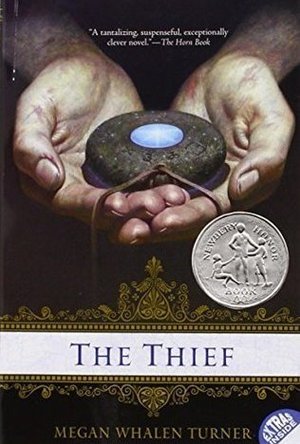
The Thief (The Queen's Thief #1)
Book
Discover the world of the Queen's Thief New York Times-bestselling author Megan Whalen Turner's...
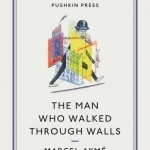
The Man Who Walked Through Walls
Marcel Ayme, Sophie Lewis and Yann Kebbi
Book
A collection of funny and fantastical short stories, Marcel Ayme's The Man Who Walked through Walls...
Heather Cranmer (2721 KP) rated On Wings of Silence: Mexico '68 in Books
May 6, 2019
A Well Written and Interesting Historical Fiction Novel
I'm a fan of books written in verse. There's just something special about them that calls out to me. When I first heard about On Wings of Silence: Mexico '68 by Dede Fox, the synopsis intrigued me. When I heard that it was written in verse, it was then that I knew I had to read this book. I ended up loving this book.
I will admit that I had never heard of the Tlatelolco Massacre before I read On Wings of Silence: Mexico '68. The plot does a fantastic job of explaining the massacre to those who know nothing about it. It was also interesting to read about Diana's time in Mexico as an American university student. Everything is told through Diana's perspective. This book made me want to research more about the Tlatelolco Massacre that the Mexican government tried to keep hushed up.
The prose in On Wings of Silence: Mexico '68 was done beautifully and perfectly. Every word elicited all kinds of feelings whilst reading this book. Because this novel was written in verse, it really drove those feelings home and made them feel more realistic. I think I experienced a total spectrum of feelings while reading On Wings of Silence: Mexico '68. Some readers may have a little trouble with some of the Spanish in this book, but there are enough context clues to figure out what is being said.
I really cared and felt for Diana, the main character in On Wings of Silence: Mexico '68. Diana was such an authentic and fleshed out character which can sometimes be a challenge in books written in verse. Dede Fox made character writing appear easy! My heart felt so full while Diana was falling in love with Guillermo. I felt as if I was falling in love at the same time. When Guillermo went missing while on the phone with Diana, I felt such panic. Her search for her boyfriend felt as if it was my search. I was worried for Guillermo as if he was a real person instead of a fictional character. (Sadly, as this book is based on an actual historical event, I imagine that feeling was all too real for many people.) I lived in hope Guillermo would turn up at some point. I'll just leave it at that because you'll have to read the book in order to find out Guillermo's fate. Diana was such a strong female character as well. I really admired her. Natalie and Melinda, Diana's roommates, were likable characters, but we don't get much of a backstory on them. I feel as if this was done on purpose so the reader could really focus more on Diana's story.
The pacing was done fantastically! I devoured this book in one sitting. I couldn't get enough. Each word flowed beautifully into the next, and I was left captivated and hungry for more of the story.
Trigger warnings for On Wings of Silence: Mexico '68 include attempted rape, sexual assault, violence (although not graphic), drinking, some minor profanities in English and Spanish, and political corruption.
Overall, On Wings of Silence: Mexico '68 is a beautifully written piece of literature that will leave its reader with a plethora of feelings as well as a history lesson. I would definitely recommend On Wings of Silence: Mexico '68 by Dede Fox to everyone 16+.
--
(Thanks to the Dede Fox for providing me with a paperback of On Wings of Silence: Mexico '68 in exchange for an honest and unbiased review.)
I will admit that I had never heard of the Tlatelolco Massacre before I read On Wings of Silence: Mexico '68. The plot does a fantastic job of explaining the massacre to those who know nothing about it. It was also interesting to read about Diana's time in Mexico as an American university student. Everything is told through Diana's perspective. This book made me want to research more about the Tlatelolco Massacre that the Mexican government tried to keep hushed up.
The prose in On Wings of Silence: Mexico '68 was done beautifully and perfectly. Every word elicited all kinds of feelings whilst reading this book. Because this novel was written in verse, it really drove those feelings home and made them feel more realistic. I think I experienced a total spectrum of feelings while reading On Wings of Silence: Mexico '68. Some readers may have a little trouble with some of the Spanish in this book, but there are enough context clues to figure out what is being said.
I really cared and felt for Diana, the main character in On Wings of Silence: Mexico '68. Diana was such an authentic and fleshed out character which can sometimes be a challenge in books written in verse. Dede Fox made character writing appear easy! My heart felt so full while Diana was falling in love with Guillermo. I felt as if I was falling in love at the same time. When Guillermo went missing while on the phone with Diana, I felt such panic. Her search for her boyfriend felt as if it was my search. I was worried for Guillermo as if he was a real person instead of a fictional character. (Sadly, as this book is based on an actual historical event, I imagine that feeling was all too real for many people.) I lived in hope Guillermo would turn up at some point. I'll just leave it at that because you'll have to read the book in order to find out Guillermo's fate. Diana was such a strong female character as well. I really admired her. Natalie and Melinda, Diana's roommates, were likable characters, but we don't get much of a backstory on them. I feel as if this was done on purpose so the reader could really focus more on Diana's story.
The pacing was done fantastically! I devoured this book in one sitting. I couldn't get enough. Each word flowed beautifully into the next, and I was left captivated and hungry for more of the story.
Trigger warnings for On Wings of Silence: Mexico '68 include attempted rape, sexual assault, violence (although not graphic), drinking, some minor profanities in English and Spanish, and political corruption.
Overall, On Wings of Silence: Mexico '68 is a beautifully written piece of literature that will leave its reader with a plethora of feelings as well as a history lesson. I would definitely recommend On Wings of Silence: Mexico '68 by Dede Fox to everyone 16+.
--
(Thanks to the Dede Fox for providing me with a paperback of On Wings of Silence: Mexico '68 in exchange for an honest and unbiased review.)
